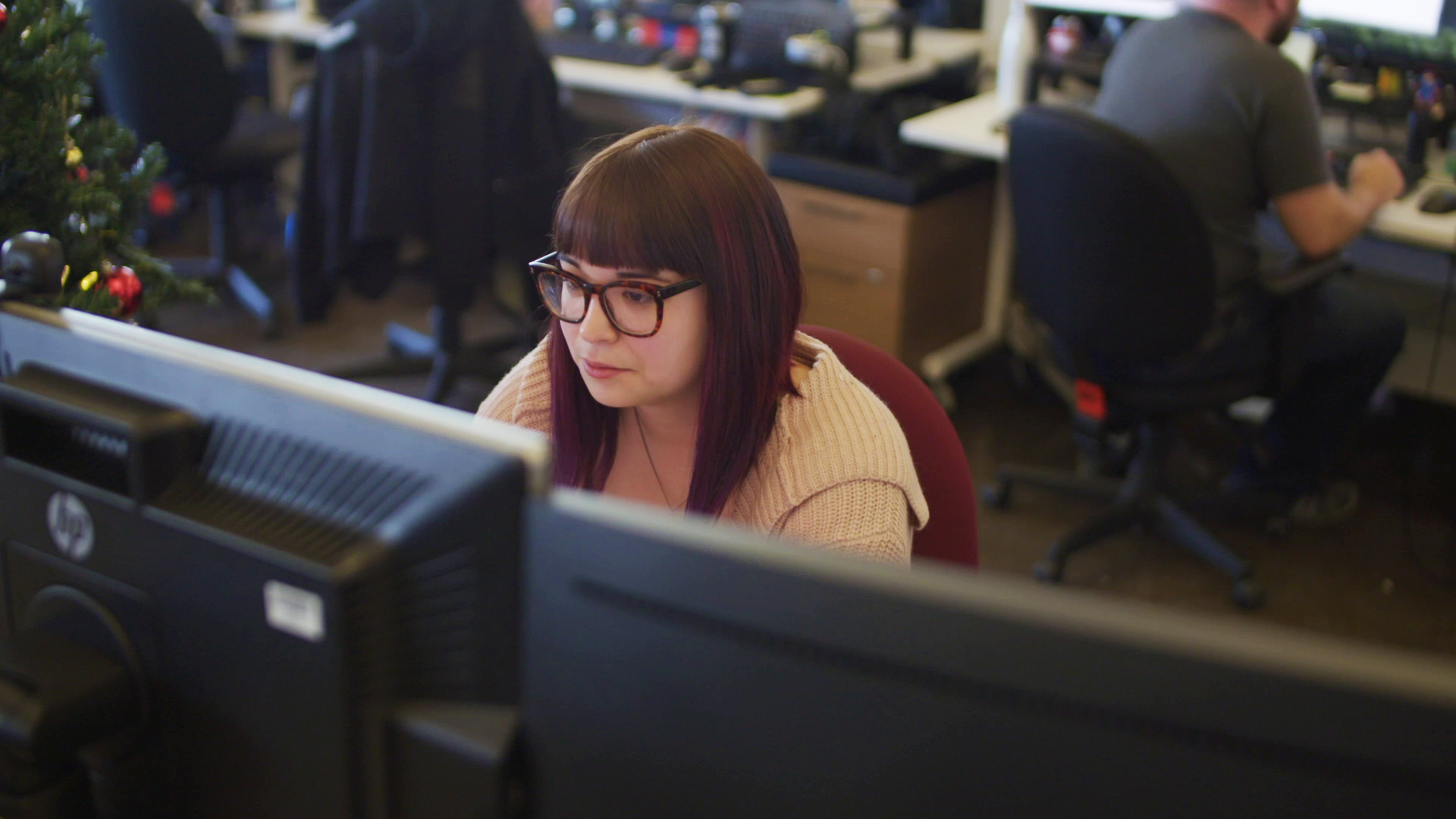Ever wondered who gives life to your favourite characters? Meet Kennetha Story! She is an Project Lead Animation, working on an unannounced project. We caught up with her to chat about her work, educational path and advice to young people considering a career in animation.
Can you describe your work at Ubisoft?
As animation team lead, I’m responsible for the workload of the entire gameplay animation team. Every day I work with programmers and designers to scope the work of all our features and break it down into actionable tasks. These tasks for animation can range from seeing what we can keyframe and prototype, fleshing out a system’s skeleton so we can get design and functionality feedback as soon as possible, and then accurately planning how much workload all of this will represent down the line. For instance, my team and I might explore character designs with our modelling team and figure out what needs to be done in order to bring these characters to life. The key for us is to nail the right gameplay feeling, and from there, the animation team collaborates with many departments to make that happen.
What does a typical day look like?
I spend every day keeping up to date on our major cells -AI, 3C, Fight – and making sure that the biggest projects are advancing well. This might mean organizing review meetings, planning out future goals for a feature with designers, sitting down with animators to discuss a particular system, or planning out our motion capture shoots in advance.
There are so many moving parts on gameplay that it is important we plan our time wisely as animation is often the most costly part of each system. I usually synch up with our animators to see how complicated or large a particular feature has become. From there, I plan out the best course of action for how to bring it from a prototype to a final product. This means looking at not only the flat amount of animations and how the animator and programmer has made them work together, but also seeing the results in the game with everyone who made it and critiquing it from there.
What do you like most about your job?
Collaborating with so many people! I love problem-solving complex subjects that involve many different departments. Getting everyone into a room and breaking down all the dependencies of how to make a feature, and then organizing it into a plan, is always a satisfying process when everyone is pushing towards making the best game possible.
What is the biggest challenge you have faced?
Getting everyone to agree! I think one of the challenges of being such a big team in a large studio is that we all bring strong opinions and goals to the table. It can sometimes be long to make decisions, or to keep everyone on track. That’s where my job can be helpful in the sense that my goal is always to help everyone focus and hit their marks as a team. It is part of the fun but also challenging.

Which type of education is necessary for this job?
Part of the educational path of any animator is learning to receive feedback, and becoming disciplined enough to practice and learn a very special craft. My studies in 3D Animation are vital to my work, while my work as a manager is well supplemented by my degree in Communication Studies. I would say the first goal should be to become skilled in your field’s “key job skills”, so in my case, animation!
There are some great CEGEPs that offer 3D animation courses, and many like Dawson College provide courses taught by industry veterans from Montreal. Colleges that are oriented towards game development sometimes provide collaborative experiences where animators work with designers and programmers to create a group project.
What was the moment when you said “Yes! I want to work in the video game industry”? Who was your best role model or coach at the time?
I started to consider working in video game production pretty seriously towards the end of my BA in Communications. I was very invested in Team Fortress at the time and loved what they were doing in terms of their in-game animation and amazing character shorts! I was lucky to be graduating at a time when the Ubisoft[i] Campus was up and running. I decided to give it a shot as I had a pretty strong personal interest in animation already.
My biggest role model has always been my mom. She has always been a strong supporter of me taking chances, trusting my instincts and following my interest in animation even if it meant veering away from my three year BA program to try something new.
Do you have any advice for young people who would also like to consider animation as a career?
Animation is hard, and there are no short cuts. You need to practice, learn the basics and accept constructive feedback in order to grow and become more skilled.
To get started, The Animator’s Survival Kit written by Richard Williams is commonly referenced as the bible of animation. It covers everything from the basics to the finer points of the art form. There are also great online communities like the 11 Second Club that hold monthly animation challenges for people to submit their work and receive feedback online. Additionally, Autodesk provides free educational licenses on their website for students. I personally learned how to animate in 3DS Max which is restrictive but very simple for animation. I find it provides a very straight-forward package, but many people prefer Maya as an introductory software. Free tutorials are available online for anyone looking to get started.
Animation is a highly rewarding craft that will throw you into a job with endless challenges and is full of interesting, talented people! If you are considering a career in this field, just go for it!
Want to know more about career opportunities at Ubisoft Montreal? Take a look at your career!
[i] The Ubisoft Campus has been replaced by Ubisoft Éducation



